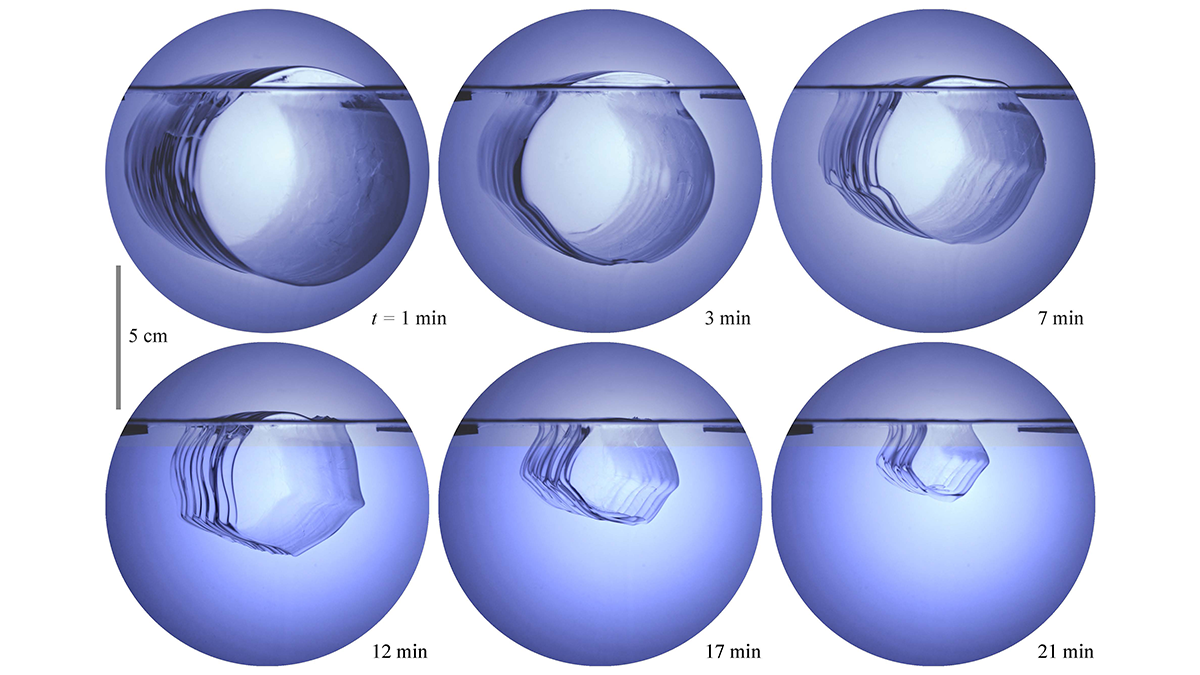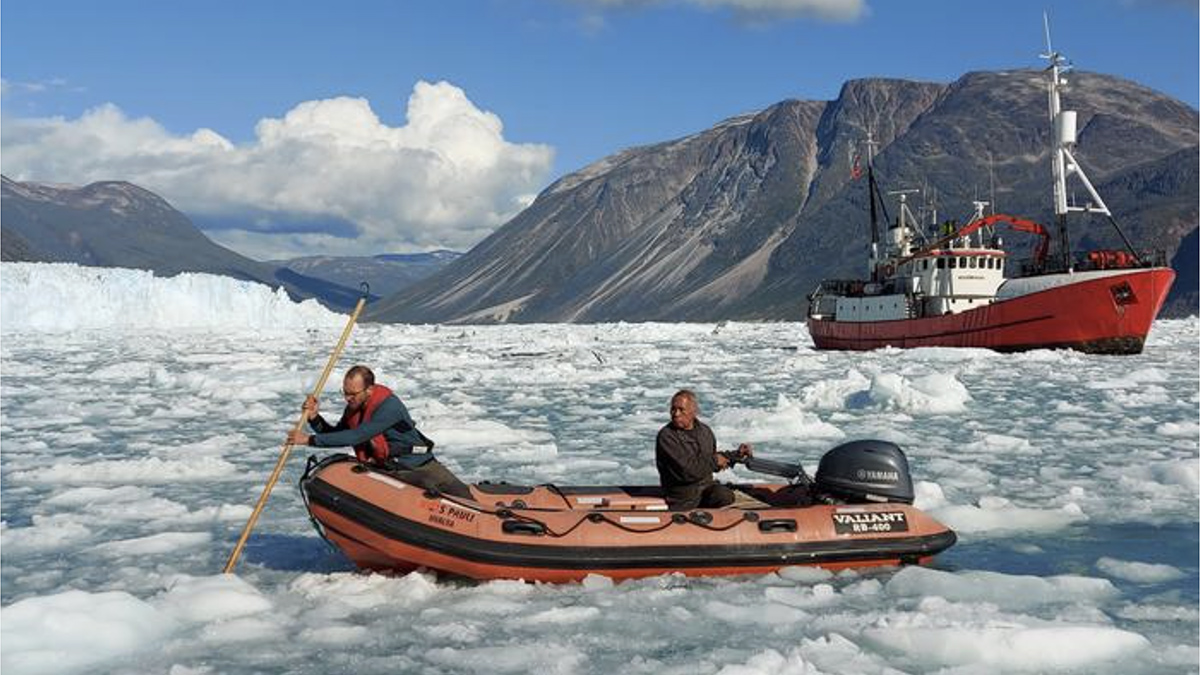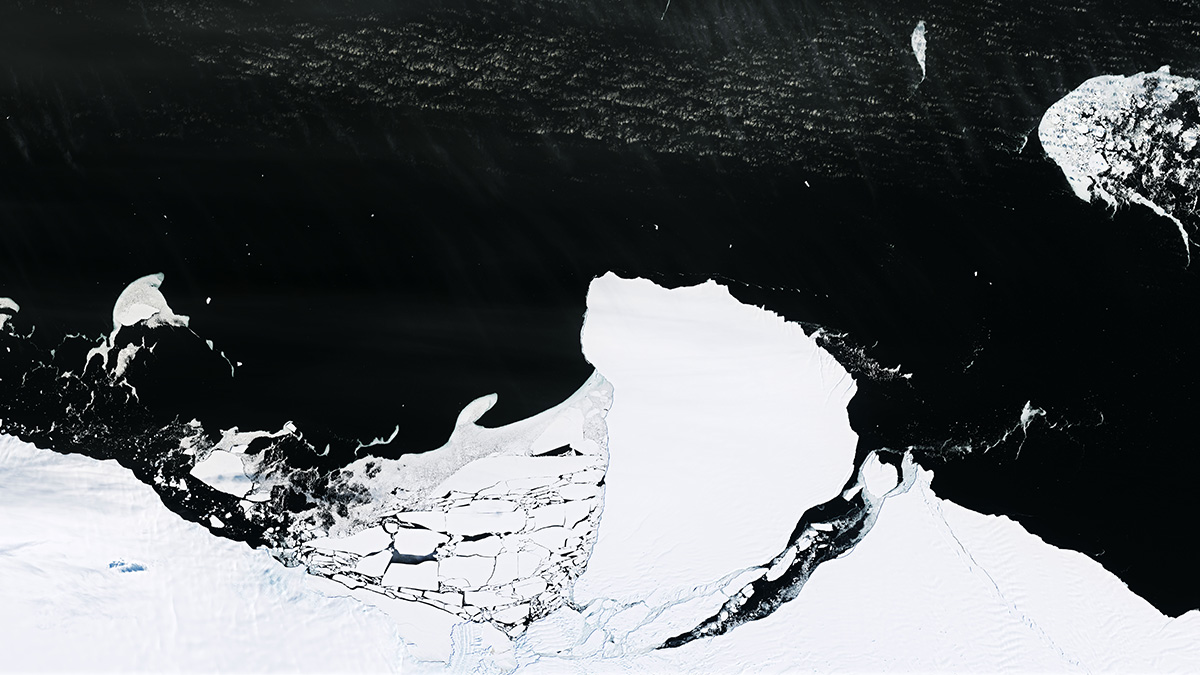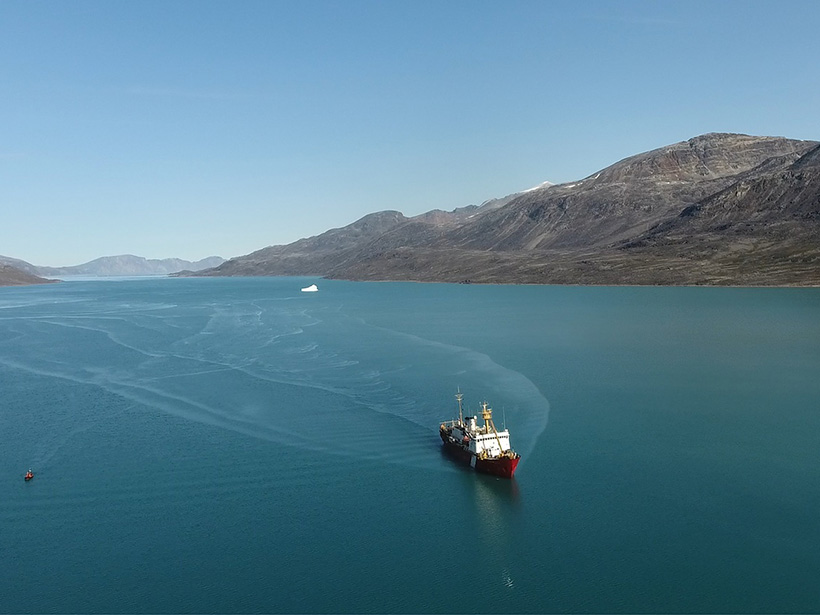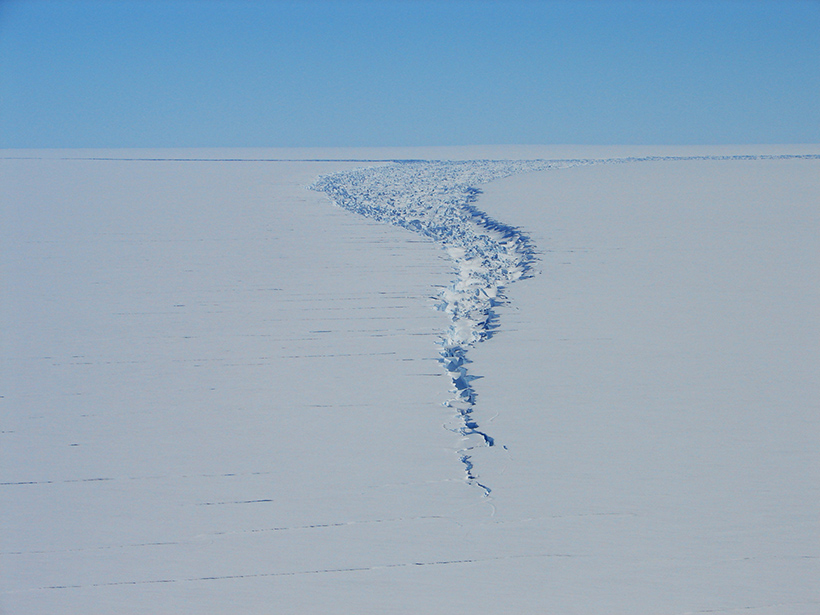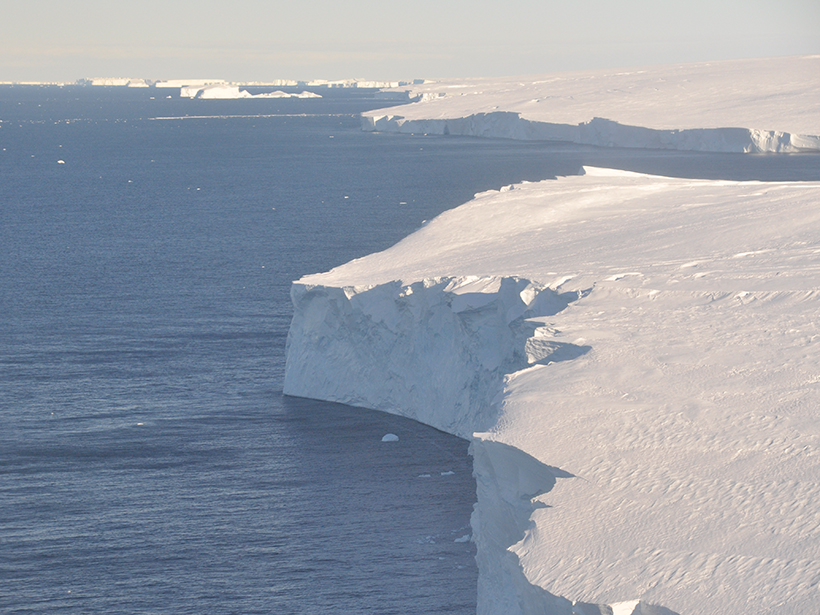New lab experiments on cylinders of pure ice shed light on how icebergs flip over as they melt, demonstrating the link between a warming ocean and small-scale events that can have rippling consequences.
Icebergs
A Fiber-Optic Cable Eavesdrops on a Calving Glacier
A glass thread strung along the bottom of a fjord captured the entire process of calving, from the cracking of ice to the breakup of bergs.
The Survival of Arctic Sea Ice May Depend on Its Travel Routes
Researchers find that the motions of ice parcels determine which ones survive the annual summer melt.
Scientists Find Clues to Atlantic Current’s Future in Ancient Iceberg Debris
Modern ice loss from Greenland rivals the most dramatic episodes of ice sheet collapse.
Speed of Ice Shelf Rifting Controlled by Ocean-Ice Interactions
Scientists report the fastest rate of rift extension yet observed for an Antarctic floating ice shelf and explain why it is far slower than rates expected for brittle ice deformation.
Supercharged El Niño Could Speed Up Southern Ocean Warming
Projected changes to El Niño will likely accelerate warming of the deep oceans around the Antarctic, supplying heat that could drive ice loss and sea level rise.
An Iceberg May Have Initiated a Submarine Landslide
A new study shows that icebergs may initiate submarine landslides when they collide with the seafloor.
Satellite Captures Detaching Iceberg in Near-Real Time
NASA’s ICESat-2 satellite recorded the cleaving of a 315-billion-ton iceberg from Amery Ice Shelf in 2019, as well as years of subtle cracking and splitting prior to the calving event.
“Terremotos Glaciales” Vistos por Primera Vez en Thwaites
Estos eventos sísmicos, provocados por los icebergs que se vuelcan y chocan contra Thwaites, revelan que el glaciar ha perdido parte de su plataforma flotante de hielo.
“Glacial Earthquakes” Spotted for the First Time on Thwaites
These seismic events, triggered by icebergs capsizing and ramming into Thwaites, reveal that the glacier has lost some of its floating ice shelf.

